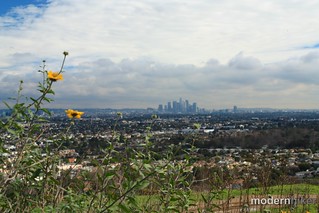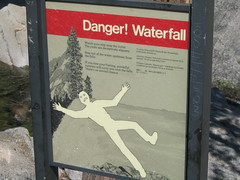 Los Angeles is surrounded by wilderness areas within a short drive in almost every direction. For me, this has always been an enormous selling point for the city and one of its most pleasant surprises for outdoorsy types – but as recent news is making quite clear it can also be a dangerous situation.
Los Angeles is surrounded by wilderness areas within a short drive in almost every direction. For me, this has always been an enormous selling point for the city and one of its most pleasant surprises for outdoorsy types – but as recent news is making quite clear it can also be a dangerous situation.
Just last week, two inexperienced hikers were rescued from Trabuco Canyon after attempting what one of the hikers called “an Easter Adventure” on the Holy Jim Trail. The trail itself is not difficult and is heavily travelled but Nicolas Cendoya, 19, and Kendall Jack, 18, wandered off the trail and became lost and disoriented. The two weren’t wearing the proper clothing for a bush-whacking expedition and weren’t carrying enough food or water and spent several perilous nights in the forest while Search and Rescue teams looked for them.
The two were rescued and hospitalized along with a SAR worker who was injured in the attempt, and Cendoya was released from the hospital yesterday afternoon. At a press conference he thanked the doctors and SAR workers who saved them, but also said in an offhand moment, “we weren’t meant to die.”
I have to wonder if that attitude was present in the minds of the five people who’ve died in Eaton Canyon over the past two years (or the many, many more that had to be rescued after attempting to reach the canyon’s upper falls). Maybe you think it can’t happen to you – you’re too young, you’re too fit, you’re too fast, too whatever. But as too many young hikers are tragically learning, Nature is completely indifferent to your sense of expected mortality.
The phrase being used in the media to describe this latest threat to our safety and existence is “Urban Wilderness.” Because these canyons are usually only a few minutes away from a 7-11 or In-n-Out, they say, to inexperienced hikers they seem to be safe and controlled environments and not the untamed wilds. Those who don’t have much wilderness experience may expect the trails to be some sort of outdoor Disney Land – maintained, free from every danger except sunburns, and constantly patrolled by well-paid rangers in sparkling uniforms. They then come out onto the trails without the proper gear or preparation, take risks they shouldn’t, and quickly get themselves in over their heads. Some may come out with a harrowing story and a few scrapes – while others don’t come out at all.
So how do we solve this problem without discouraging people from exploring the wilderness around them?
 Some have suggested adding more signs, which would not only likely go ignored but would also adversely affect the wilderness feeling of the areas. Others have asked for increased, limited use permit areas for dangerous hikes like Yosemite’s Half Dome, but few of the notorious rescue areas in Southern California are at established trailheads or in terrain where such oversight is possible. Many internet commenters (most of whom probably don’t go hiking all that much, either) have suggested charging the hikers for their rescues. I know several SAR volunteers read this site and they’ve rightly said that when you put a price tag on a rescue, it actually makes people more likely to get in trouble because they won’t call for help when they need it.
Some have suggested adding more signs, which would not only likely go ignored but would also adversely affect the wilderness feeling of the areas. Others have asked for increased, limited use permit areas for dangerous hikes like Yosemite’s Half Dome, but few of the notorious rescue areas in Southern California are at established trailheads or in terrain where such oversight is possible. Many internet commenters (most of whom probably don’t go hiking all that much, either) have suggested charging the hikers for their rescues. I know several SAR volunteers read this site and they’ve rightly said that when you put a price tag on a rescue, it actually makes people more likely to get in trouble because they won’t call for help when they need it.
So what’s to be done? Surely, increased education from park staff and the forest service would be helpful. Videos like this 2012 PSA for Eaton Canyon are definitely a step in the right direction, although the challenge then becomes making sure the people who need to see the message actually do so – I’m sure most of the people who decide to scramble to Upper Eaton Canyon in Converse All-Stars aren’t exactly the type to stop by the visitor’s center to ask for advice.
Unless we want our local trails to become more inaccessible due either to knee-jerk safety closures or increased regulations, I think it falls to us, the so-called experienced hikers, to set good examples and correct bad behavior when we see it – and to do so without being preachy or judgmental. Over the years I have personally dissuaded many an ill-equipped hiker from leaving the established trails and have explained to a few hikers why cutting switchbacks is a bad idea – and I swear I’m still fun to hike with!
What do you think? Is there a better way to prevent these injuries and deaths or is it just a part of what happens when a giant urban landscape presses up against the wilderness? Have you ever stopped an unprepared hiker from going on a route too difficult for them or even been that hiker and lived and learned?
Tags: eaton canyon, essays, holy jim trail, kendall jack, nicolas cendoya, rescues, safety, trabuco canyon, urban wilderness
